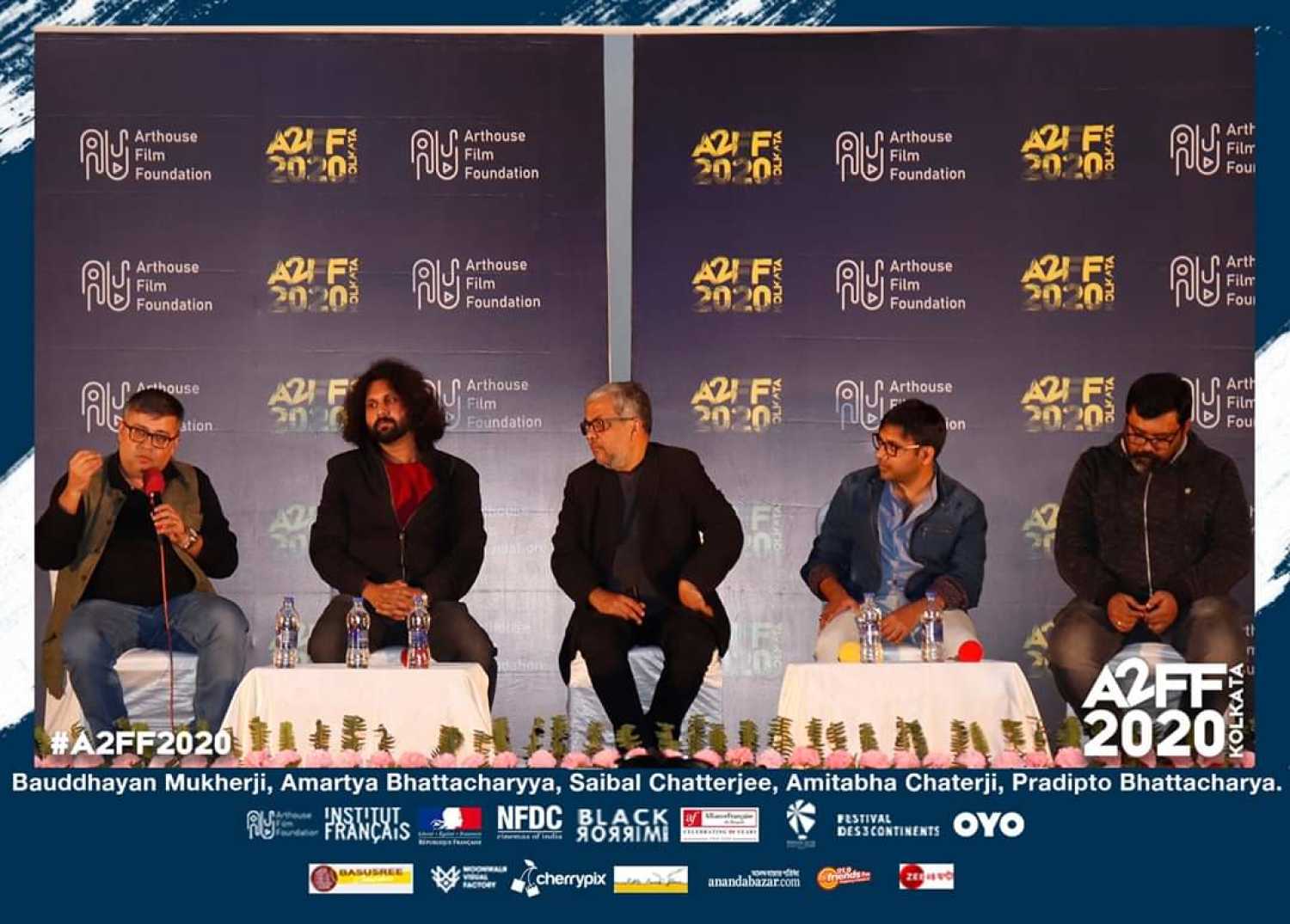The Bengali filmmakers were part of panel discussion at the Arthouse Asia Film Festival on 7 January at Basusree Cinema Hall. Each director shared their own definitions of independent filmmaking.
Pradipta Bhattacharya, Bauddhayan Mukherji, Amartya Bhattacharyya back the necessity of a screening space only for independent films
Kolkata - 21 Jan 2020 11:54 IST
Updated : 22 Jan 2020 11:22 IST


Roushni Sarkar
The 4th Arthouse Asia Film Festival, which ended last week, hosted two panel discussions on independent cinema and its prospective in a broader scenario. The first discussion, moderated by veteran film critic Saibal Chatterjee, focused on independent cinema as a movement, while in the latter, popular film critic Rajeev Masand highlighted the individual perspectives of independent filmmakers.
Bengali filmmakers Pradipta Bhattacharya, Bauddhayan Mukherji, Amartya Bhattacharyya, Amitabha Chaterji were present at the first panel discussion that took place on 7 January at Basusree Cinema Hall. Each director shared their own definitions of independent filmmaking.
Mukherji stated that an independent film should have an independent idea. It should not depend on a big production house for finance and should also be exhibited independently.
Amartya, meanwhile, said the notion of independent filmmaking comes from non-conformity. However, he felt that the ‘term’ has been grossly diluted these days by all sorts of filmmakers, including parallel and mainstream filmmakers.
Chaterji followed Mukherji's notion and said that he managed all the departments of filmmaking on his own, from shooting the film to sound design. He also maintained a very low budget so that he can collect the finances, merely through crowd-funding. Also, he sincerely believes that there is no ‘standard’ language of cinema, each and every director creates their own language, that is entirely an independent idea.
Pradipta, on the other hand, was the first to address the threat that the idea of independence is under now. He said that the term is quite relative. However, he too considered restricting budgets in order to be less dependent on big production houses for the entire process of filmmaking. However, he felt there are certain parameters, determined by both the production houses and the panellists at various film festivals, through which they judge the films.
Four of them concluded that independent filmmakers always suffer when it comes to the distribution part and hence, it is important to have initiatives, solely dedicated to the screenings of films, which do not get screened due to not meeting several parameters.
"I have seen a theatre with 75 seats in Johannesburg [South Africa] and there is a café, attached to it that runs the theatre that only screens independent films. Why can’t we follow such models in India?," Mukherji asked, raising the suggestion of a parallel space for screenings.
"I am quite sure that there is an audience and it is our responsibility to tell them that this is the place where you can come and watch these films," the director, known for his ad films and features like Teenkahon (2015) and The Violin Player (2016). He also added that ‘word of mouth’ can be the best tool of publicity for these kinds of screenings as he quite openly criticised some of the media houses for not lending the film festival any kind of support without payment.
Amartya, known for his feature films Capital I (2015), Khyanikaa (2018) and Runanubandha (2019) stressed on the fact that it is a responsibility of the mainstream media to highlight independent films.
Amitabha Chaterji, on the other hand, spoke of a collective initiative that needs to be taken by all the independent filmmakers. “I feel if all the directors come together, they can eventually get into a mainstream platform," the maker of Ami O Manohor (2018) suggested. He also said that screenings at a place, solely dedicated to independent film, must go on continuously for some time and it will eventually pull in more audiences.
In this context, Chaterji lauded Pradipta’s initiative of selling tickets of his film 2019 Rajlokkhi O Srikanto’s screenings in Jogesh Mime Academy at the Kolkata International Film Festival, where cine-lovers from the entire region throng.
It is important to mention in this context that Rajlokhi O Srikanto was initially given very few numbers of halls in the entire state. After an uproar on the social media, the distributors eventually provided them with many halls, but with a demand of certain amount of occupancy within certain days. As a result, the film was pulled off from all the theatres within a week and the director was pushed to arrange for other screenings.
Pradipta also shared that after the release of Bakita Byaktigato (2013), his National award-winning debut film, he had arranged for screenings in his native place, Tehatta. They sold tickets door to door, making announcements by rickshaw, and eventually organised three housefull shows there. He commented, "I have taken my films to many film festivals and I have realised there is actually no distinction between mainstream and alternative films."
At the end, the four filmmakers stressed on the requirement of an independent space and also announced that the owner of Basusree Cinema Hall is contemplating an initiative to host the screening of at least one independent film every weekend. They felt the screenings will also encourage more to participate in the film festival in the coming years.
Related topics
Arthouse Asia Film Festival






